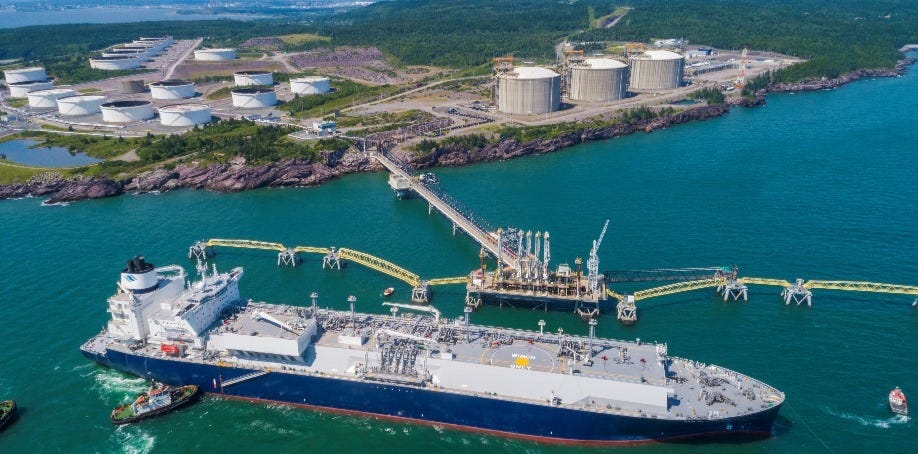The magic happens when no one’s watching.
For natural gas to condense into a liquid, it needs to be super-purified, then squeezed and chilled to the “cryogenic” temperature of -162°C. How can this be done on an industrial scale?
Feed gas entering an LNG export plant is first processed to at least 99.98 per cent pure methane. The methane gas stream is then compressed by giant turbines that drive it through miles of capillary tubing in braided heat exchangers, dropping its temperature in stages to below -155°C.
Then comes the magic — a physics quirk called the Joule-Thomson effect.
Pressurized, supercooled methane gas is suddenly released through a valve. This abrupt “pressure drop” causes the gas molecules to expand in volume, dropping their temperature below the point where methane gas condenses to a liquid, a blue-flame fuel that burns fast and clean … producing liquefied natural gas, or LNG.
Automated controllers pump the LNG into big, insulated storage tanks, then load it into ocean-going tankers built like giant floating thermos bottles. Off they sail to supply industrial customers anywhere, unloading wherever people need gas to fuel their own industries, like the Irving Oil refinery in Saint John, for example.
But long forgotten in the new global business of LNG trading is an early scientist who helped “map” the cryogenic properties of different elements — a Canadian chemist whose low-temperature research won a Nobel Prize: William Giauque.

